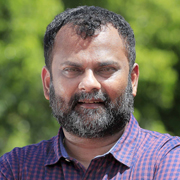Future technologies must be propelled by power of today’s youth: DRDO chairman

Mail This Article
Bengaluru: Military minds, aviators and scientists involved in research and development got a sleek preview of the advances in defence technologies at the Katre memorial annual lecture here on Wednesday.
Like a physics lecturer and showing traces of his mentor Dr Abdul Kalam’s speaking style, Defence Research and Development Organisation (DRDO) chairman Dr Satheesh Reddy touched upon focus areas in defence that included aerospace, missiles, space technology, missile defence and weapons, sensors and artificial intelligence.
“Our R&D efforts to support the Light Combat Aircraft Tejas programme ensured that we have now achieved close to 100 per cent indigenous capabilities for all critical 4+ generation technologies,” Dr Reddy said.
On the AMCA (Advanced Medium Combat Aircraft), Dr Reddy said technologies like pilot associate, advanced avionics, body confirming-shared aperture, serrated doors, IR paints and high-temperature radar absorbing paints for nozzles are being launched in India.
As reported by Onmanorma earlier, India has an ambitious plan to have the first flight of AMCA by 2025 and scientists are already working on various stealth features for this platform.
Super cruise abilities to fly at supersonic speeds minus the afterburner, passive sensors, internal weapon bay, advanced integrated avionics, next-gen AESA (Active Electronically Scanned Array) radar, 360 degree enhanced situation awareness, IVHM (Integrated Vehicle Monitoring System), serpentine air intake, IRST (Infra Red Search and Track), MAWS (Missile Approach Warning System) and Diverterless Supersonic Intake (DSI) are among the new technologies that would get embedded on to AMCA.
He said on the Unmanned Combat Air Vehicle (UCAV) front India will use the derivative of Kaveri engine.
“We have currently the Rustom-II being flight-tested. It has to increase its endurance other features as being mandated by the users. This would give us the confidence to develop UCAVs for which work has already begun. Features like precision strike by scene-matching, ground-control designation are being looked at now,” he said.

The UCAV will have to operate at high altitudes (40000 feet) and possess long endurance in addition to having stealth features.
Swarm drones
The DRDO chief also touched upon ‘swarm drones,’ a capability advanced nations are already developing for future warfare.
He said swarm drones can be used for search and rescue, search and destroy, autonomous surveillance, plume tracking and convoy protection.
On the recent success of A-SAT (Mission Shakthi), Dr Reddy said close to 50 industries had participated in this top-secret project, supplying close to 2000 components.
He said A-SAT missions are not repeated by any nations and India has achieved all the desired objectives.
Directed Energy Weapons
Touching upon new thrust area of Directed Energy Weapons (DEW), Dr Reddy said India has begun work on this field as well.
“We have begun the R&D of 50 kW DEW, including ship motion compensation. The laser propagation studies for long range (10 km) is on, including lethality study for various target materials. The bigger goal of development of a 100 kW system in future also has taken wing,” says the DRDO chief, who completes one year in office at the end of this month.
He said the AESA (Active Electronically Scanned Array) radar is currently undergoing trials.
“We had displayed our AESA radar fitted on Tejas during Aero India 2019. It is currently undergoing flight trials and we will complete it by end of this year. The results are extremely satisfactory. These are capable of detection, tracking, imaging and navigation,” Dr Reddy said.
Speaking to Onmanorama, Dr Reddy said in the last one year he has been putting the best foot forward to make DRDO a ‘delivering force.’
“We have a clear roadmap in place and our efforts are to deliver what the Services need on time. Greater emphasis has been given on quality and we have separately dealt with all the grey areas of the past. DRDO has a great role play in the government’s Make in India initiative. And, we are it,” Dr Reddy said.
Smart innovations
On morphing technologies, he said scientists are already working on advance materials that adapt to external shape considerably to match the mission requirements during flight.
“Future missions require platforms with increased range, speed, less fuel consumption and long endurance. We also need higher stealth capability, reduced noise and minimal operational cost,” he added.
He also touched upon new-age technologies in artificial intelligence (AI) and its application in military missions.
He said AI has tremendous potential in military applications such as warfare platforms, cyber-security, logistics and transportation, target recognition, battlefield healthcare, combat simulation and training, threat monitoring and situational awareness.
“At the end of it all, we need innovations that can secure our future. Innovations that can be smart, swift and sure. Technologies for tomorrow will have to be propelled by the power of today’s youth,” Dr Reddy said.
Focus on youngsters
He said youngsters in DRDO have been given the freedom to come up with new ideas to aid ongoing and future missions.
“I am clear that the future of DRDO depends upon the kind of responsibilities and risk-taking abilities youngsters possess now. We have initiated a series of steps to give young scientists responsibilities in critical areas. I am inspired to see the kind of responses from youngsters,” Dr Reddy said.
He said DRDO has come out with a scholarship scheme for girls who are keen to pursue a career in aerospace engineering, aeronautical engineering, space engineering, rocketry, avionics and aircraft engineering.
“The details are on our website. Girls studying in first year of B.Tech\BE or M.Tech\ME are eligible for this scholarship,” Dr Reddy added.
As per the notification, selected PG students (girls) will get a scholarship of Rs 1,86,000 every year and Rs 1,20,000 per year for selected graduate candidates. The last date to apply for the scholarship is September 10, 2019.
(The writer is an independent aerospace and defence journalist, who blogs at Tarmak007 and tweets @writetake.)


